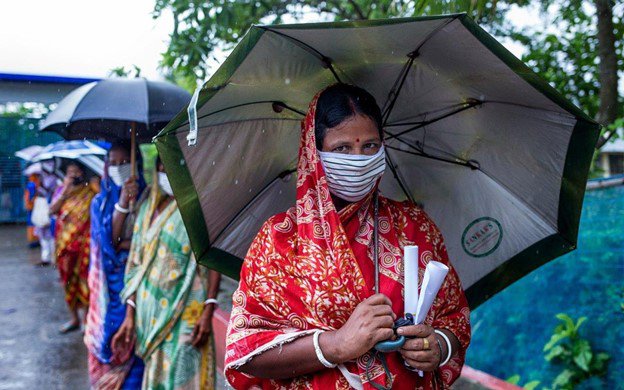As the largest bilateral aid donor in the world, the US could have a lasting legacy on the global fight against poverty. But we need to take the opportunity and responsibility seriously, and dedicate enough funds to make a difference–especially during the pandemic.
Budgets are moral documents. Columns of figures and bottom lines reveal our identity, priorities, and beliefs.
When the White House released its “Skinny Budget” in April (a preview of the real thing), there was good news and bad for those of us who hoped to see restored commitment to international engagement and foreign aid. While some initial executive actions hinted that this administration will take bold action, the budget is where the rubber meets the road for the president to fulfill his promise to restore American leadership in the world.
As we examine the full budget proposal, released today, we’ll be asking two questions: First, what does US foreign assistance, especially during the COVID-19 crisis, have to do with American leadership in the world? And second, how well does the budget demonstrate leadership in responding to the pandemic?
US foreign aid is crucial to global recovery from COVID-19
As we face the enormous challenge of building back from the COVID-19 crisis, we must recognize that US foreign assistance is critically important. (For more on aid, see Oxfam’s Foreign Aid 101.)
To begin, let’s note that the US spends less than a half of one percent of its budget on foreign aid; the amount varies year to year, and may sound like a lot ($34.6 billion in global development and humanitarian aid in 2019, bumped up by 4.7% in 2020), but it’s actually a drop in the bucket compared to other spending priorities (such as defense, which clocks in at 15 percent).
And if we look at the percentage of US gross national income we devote to foreign aid, it is strikingly low by comparison to other wealthy nations. Where the US contributes .17 percent of GNI to foreign aid, for example, Sweden contributes 1.14%.
The foreign aid budget is also a drop in the bucket in terms of meeting global needs. Before the pandemic, ten percent of the world’s population was living in extreme poverty. (Dire as that number is, it represents decades of improvement.) But the positive trend is reversing: climate change and the pandemic are driving hundreds of millions more into poverty.
We face a historic challenge. If we fail to invest appropriately, global inequality and poverty will deepen. However, if we rise to the moment and increase the quality and quantity of foreign aid, we could see inclusive, equitable recovery through a combination of saving lives, securing foundations of the economy, strengthening resiliency, and helping people lift themselves out of poverty.
Most Americans want the US to step into this role. In 2019, seven in ten believed in continued US engagement in world affairs; nine in ten now agree it’s important for the US to work to limit the spread of COVID-19 in other countries.
The budget and the need for the US to step up
The Skinny Budget shows increased spending on education, health, and climate initiatives, and demonstrates a clear re-prioritization on other critical issues, such as addressing the root causes of forced migration in Central and South America and committing to international efforts around climate mitigation and adaptation.
The budget also includes resources to rebuild the Refugee Admissions Program (systematically dismantled over the last four years) to welcome up to 125,000 refugees in FY 2022; to provide $10 billion in humanitarian assistance to support vulnerable people abroad; and to restore humanitarian aid to the Palestinian people, including support for the UN Relief and Works Agency for Palestine Refugees in the Near East (UNRWA).
The Skinny Budget builds on the American Rescue Plan Act of 2021, which allocates $11 billion for international aid, including $7.5 billion to the Centers for Disease Control (CDC) to combat COVID-19 locally and globally, and $580 million to the UN Global Humanitarian Response Plan for COVID-19.
These are significant steps—but are they enough to adequately respond to the global crises we face? Will the final budget enable the US to throw its weight behind progressive change in the world? We hope it represents informed and inclusive policy development, matched by enough money to ensure effective partnerships and accountability—domestically and internationally. We will be watching closely.
A final note: Not just more aid, but better
We should note that it’s not just about the quantity of money; it’s also about improving the quality of aid.
As a good example, consider the Bangladeshi organization Shushilan. After Cyclone Amphan blasted through vulnerable communities in Bangladesh in May 2020, the organization was able to swing into action immediately, distributing food, cash, and clean water. It was equipped to respond quickly because of decades building trust and networks, strengthening technical skills with the help of international agencies.
While it’s not always easy to partner with local organizations like Shushilan, the US is trying to focus on aid quality and effectiveness. But we must do more to provide resources based on need, and most importantly, center aid on the most vulnerable.




